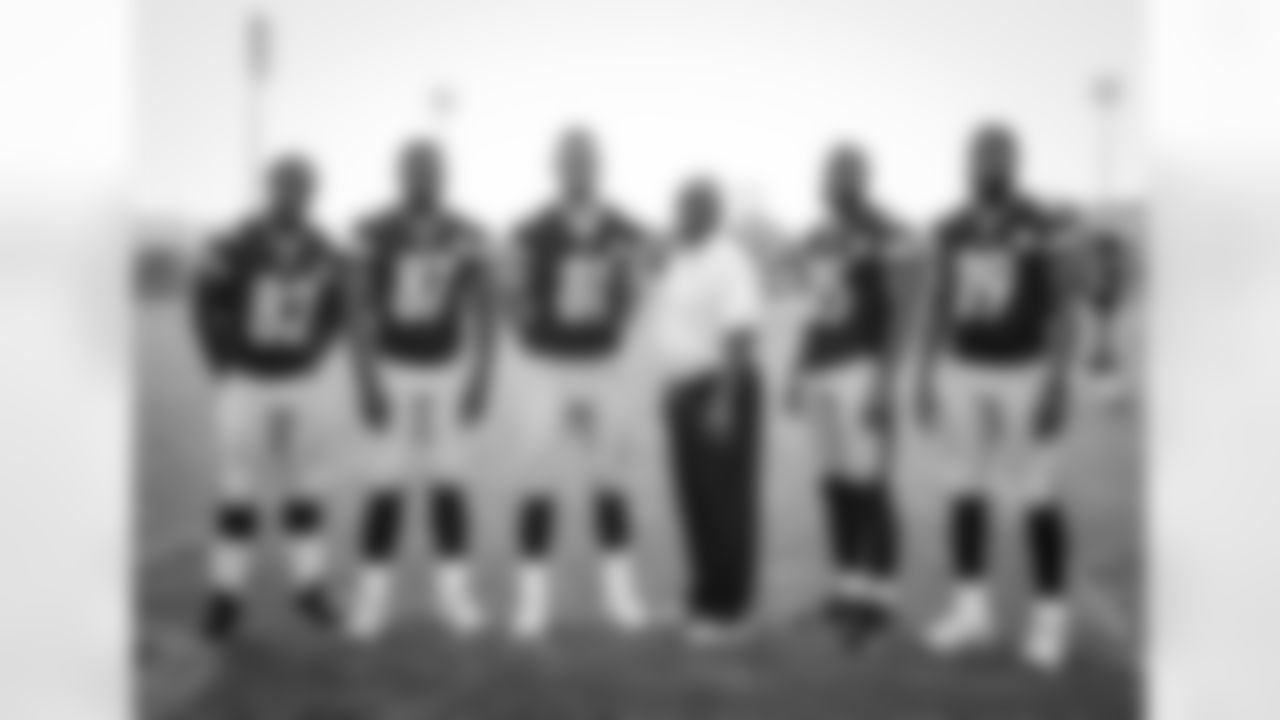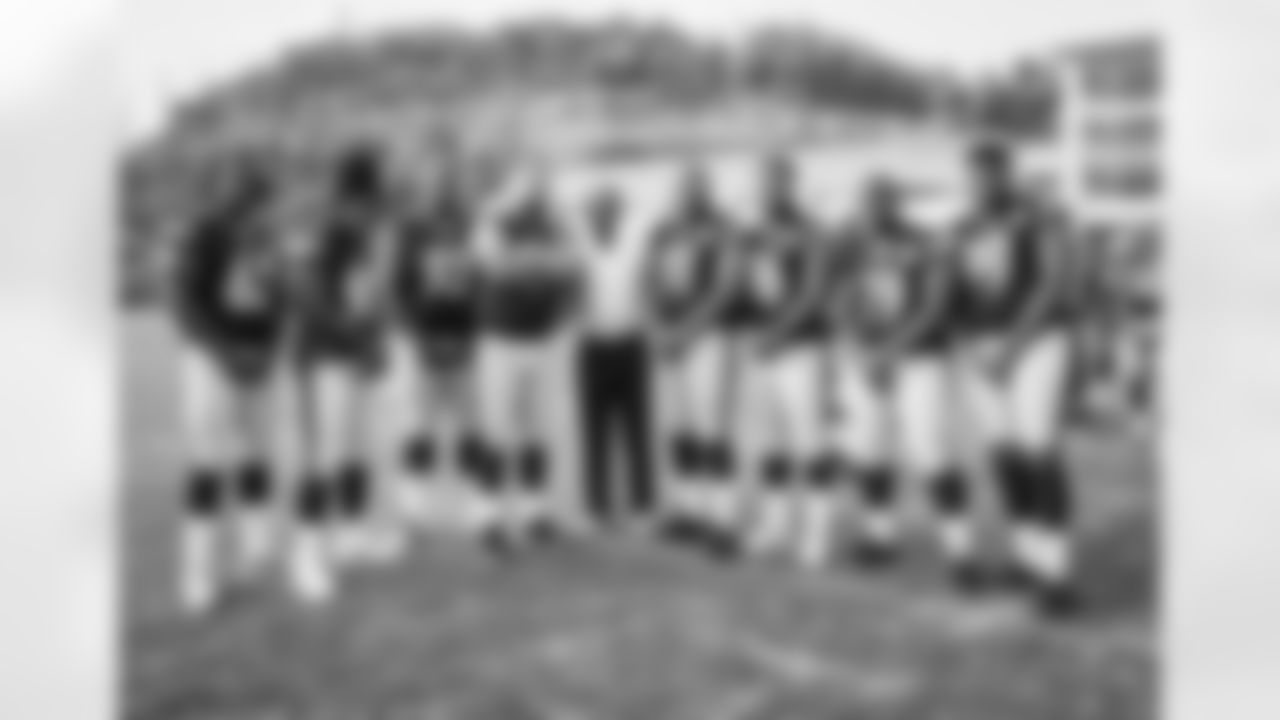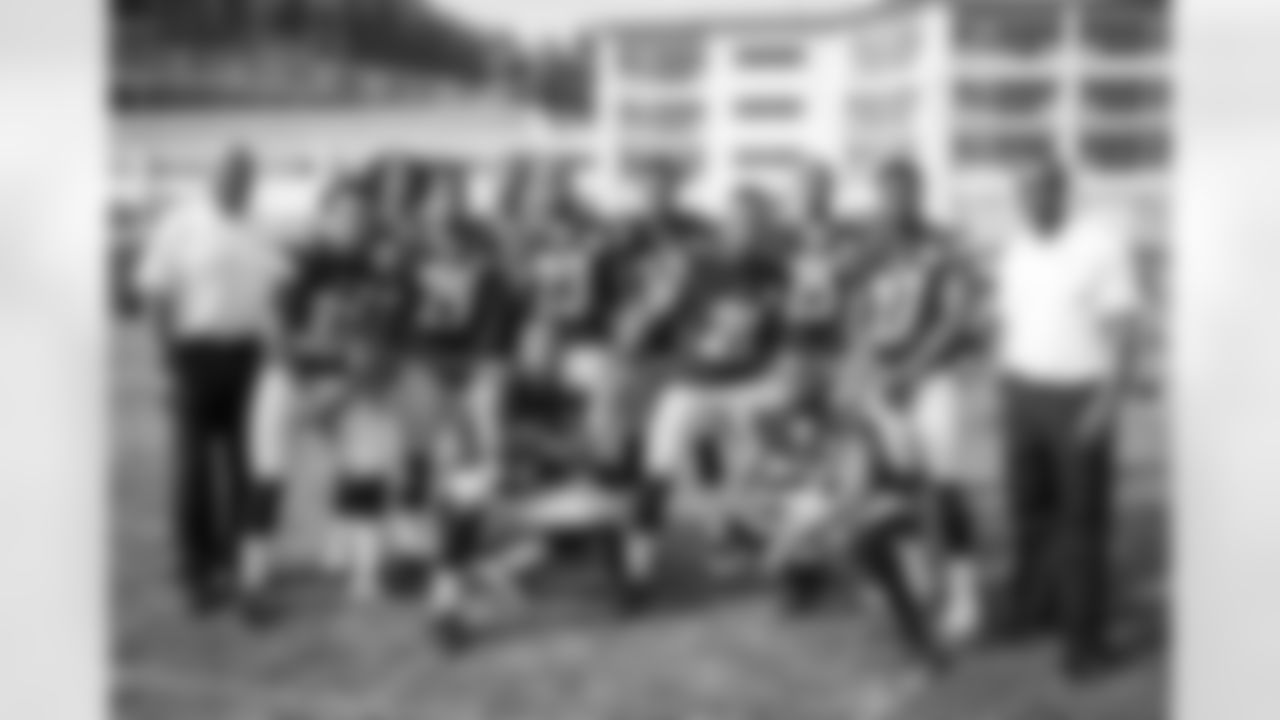Q. You have said that this week, it's AFC North football? What is that?
A. It's going to be hotly contested. There is going to be a lot of energy in the stadium. You have two good teams, with a similar goal and mentality. There's always fireworks, and so we're excited about it and we embrace the challenges that make up the games in our division.
**
Q. Do all divisions have an identity?**
A. I don't know that every division has an identity. I think continuity has a lot to do with it, and the continuity in Cincinnati and Pittsburgh and Baltimore create familiarity. And with that familiarity comes tension and known issues relative to the matchup, which makes the games hotly contested. If you have continuity in multiple cities, you have the necessary ingredients for the type of rivalries that comprise the North, but I really think that continuity is the key ingredient that makes the AFC North Division rivalries what they are.
Q. This is the home opener. What does that mean in football?
A. It's the first opportunity we get to roll the ball out and entertain our fans. We have the greatest fans in the world. We have an awesome venue, and our fans make it that. We want to perform at a high level for them.
Q. Other sports make a big deal out of opening day, with some Major League Baseball teams treating it as a formal occasion. Is a football opener different?
A. There's less fanfare generally with a football opener than with some of the other sports. But it's still exciting. There's a certain scarcity with NFL football. Whether you're talking about Major League Baseball or the NBA, there are a lot of games and so they do special things to highlight the games. In football, there's great scarcity in the number of games overall, and so there's a lot of energy and excitement with every home game. There just aren't that many of them.
Q. Last week we talked about the election and the function of team captains. This week marks the occasion of another football tradition – the taking of the team photo. What does that mean to you?
A. It is a big deal to the players, because it's a culmination of dreams for some guys. Guys running down on the opening kickoff getting their first NFL action signifying that they're a member of the Pittsburgh Steelers is another example. The team photo is something that's etched in stone – those guys have their spots for that picture; they made the team. They're NFL players, and more importantly they're Pittsburgh Steelers. So it is significant. Ceremonially, it's another one of those boxes that acknowledge that you have arrived.
**
Take a look at some behind the scenes photos from the 2016 team photo shoot

Robert Golden, Ben Roethlisberger, Mike Tomlin, Cameron Heyward, and William Gay






David Johnson, RaShaun Allen, Jesse James, James Daniel, Xavier Grimble and Ladarius Green




Cody Wallace, Ryan Harris, Ramon Foster, Jerald Hawkins, Alejandro Villanueva, Maurkice Pouncey, Mike Munchak, Shaun Sarrett, Marcus Gilbert, B.J. Finney, David DeCastro, Matt Feiler and Chris Hubbard

Vince Williams, Steven Johnson, Tyler Matakevich, Jerry Olsavsky, James Harrison, Arthur Moats, Lawrence Timmons, Joey Porter, Travis Feeney, Anthony Chickillo, Bud Dupree, Jarvis Jones, L.J. Fort, and Ryan Shazier

Johnny Maxey, Ricard Mathews, Daniel McCullers, Cameron Heyward, John Mitchell, Stephon Tuitt, L.T. Walton, Javon Hargrave, and Caushaud Lyons

Carnell Lake, Jordan Dangerfield, Ross Cockrell, Shamarko Thomas, Mike Mitchell, Sean Davis, Justin Gilbert, Robert Golden, Artie Burns, Senquez Golson, Al-Hajj Shabazz, William Gay, and Terry Cousins

Sammie Coates, Cobi Hamilton, Eli Rogers, Demarcus Ayers, Antonio Brown, Richard Mann, Markus Wheaton, Darrius Heyward-Bey, and Canaan Severin

Jarvis Jones, Cameron Heyward, James Harrison, Arthur Moats






Q. Is it a congratulatory thing among the players, a celebration of any kind, albeit a minor one?**
A. There are enough experienced guys there who are ready to squash the excitement of the first-timers (laughs), and so if there is any excitement associated with it, they wouldn't dare let anybody know it.
Q. During your weekly news conferences, when you list the injuries, you'll often say that a player's ability to participate in practice will determine his availability to play that week's game. How is availability for practice determined?
A. The doctors, and the player. If you get the green light from the docs and the player that they're ready to take the next step in coming back from whatever it is they're dealing with, then practice is that next step. Then the ball is in my court. It's an evaluation of their overall functionality or their ability to do their jobs, but that's not done exclusively with me alone. The individual position coaches watch them closely, watch them more closely than I do, and then we'll double-back and also confer with the player and the docs again before coming to a final determination.
Q. How many guys do you have on the roster who would be capable of playing in a game with no practice that week?
A. It's a small number of guys. You could probably count them on one hand. It would be the been-there done-that veteran players who need few-to-no reps to be prepared. And more importantly than that, they have experience and know-how in those circumstances. And sometimes you get a certain level of comfort through shared experiences. Sometimes circumstances force you to have some experiences that you can put in your memory bank for future usage. I've been in that situation with Ben before, unfortunately, and so I have a certain amount of comfort that if we end up in that place again, he's capable of playing winning football, for example. So what I mean is there are a few number of guys in that group, and you usually get into that group by circumstances that are beyond all of our controls.
Q. In a fourth-down situation, if you decide to go for it, when do you make the decision?
A. Maybe Friday. You cover the scenarios that lead up to that decision, and by Friday you look at the characteristics or variables that are going to be in play, and so by the time you get to those moments in the game you've already rehearsed in your mind a couple of scenarios that need to transpire to put you in that frame of mind. For instance, the first fourth-and-1 we went for in Washington, we were in what I call field goal fringe, and we had a full yard to go. We had worked that earlier in the week – we had said if we were in field goal fringe and we felt like going for it could give us a boost we needed to take a calculated risk to get us started. Those very variables transpired during that drive, and so it was a quick and easy decision for us.
**
Q. Do you ever solicit anyone else's opinion?**
A. I'm very cautious about that, to be honest with you. I want to wear the responsibility of that decision. That's my job. I embrace that. I appreciate input, but I'm not looking to share the workload.
Q. How does it feel to be the one making a decision for a group of men?
A. Probably more than anything, it is humbling because you have the livelihoods of men that rest on your decision-making, the outcome of the game, opportunities guys have been working for. It's not a haphazard thing. It's something I go through with a great deal of thought.
Q. Is there a key guy on the Bengals defense? How does his play set things up for the others on the unit?
A. I think it's Carlos Dunlap. He's a problem in all situations and scenarios. In the running game, he's a ridiculous matchup for tight ends because of his size and length. His pass rushing abilities speak for themselves. He's one of the best defensive ends in football. His range and his athleticism make him a factor in plays that guys who play his position shouldn't be a factor in. If you throw a perimeter screen, if you throw the ball downfield, if you're running away from him, you better be cognizant of how you carry the ball because he's a tremendous chase-player. He has great length, and that length shows up. He's highly productive all over the field. To me, he is the most impactful guy on their defense.
Q. On offense, who is their key guy, not counting the quarterback, and how does his play set things up for the others on the unit?
A. That's easy. A.J. Green. He's a guy who can change the climate of a game in an instant, and has. We were there in a playoff game, and we were up, 13-0, and there were about six minutes left in the first half. Boom. He drops a bomb on us, goes about 70 yards, and it's game on. The whole climate of the game changed on one play. Those are the type of abilities that he has, and he displays them consistently. The Bengals were in a tight ballgame last week against the New York Jets. He dropped a bomb on them. Boom. The climate of the game changed in an instant, and that was Darrelle Revis across the line of scrimmage from him. Green is that type of player. He's impactful. He can change the game in the blink of an eye. We have a great deal of respect for him and his abilities.
Q. The Bengals have a new offensive coordinator this year – Hue Jackson was hired as the head coach in Cleveland, and Ken Zampese is the offensive coordinator. Have you seen much difference in what Cincinnati is doing on that side of the ball?
A. It has been interesting studying them. They're a continuity group – much has remained the same – but you still do see some elements that were exclusive to Hue Jackson, you still do see some elements that were exclusive to Jay Gruden, who was the Bengals coordinator before Hue Jackson. Ken Zampese has been there for a long time, and they have an opportunity to not only add a new wrinkle but also still lean on some of the things that have been good to them. That's one of the things they have from an organizational standpoint with the type of continuity they have. Even though Ken is new to the job, he's not new to them. He's got relationships and understandings regarding the players that they can build on moving forward.
Q. Beyond the final score and the turnover ratio, which statistic might turn out to be the most critical in reflecting the outcome of the game?
A. Yards per carry, via the rush, on both groups. Our ability to win the line of scrimmage on both offense and defense usually sets the pace in terms of which quarterback has a leg up when the ballgame ultimately comes down to how they operate. We've got Ben. They've got Andy. I'm sure they feel just as good about their signal-caller as we do about ours. The team that controls the line of scrimmage is going to put that signal-caller in the driver's seat as the game continues to unfold.
Q. The average per carry statistic you just referenced, is that the one you look for to determine which team has control of the line of scrimmage?
A. It is (the statistic) in the nature of this matchup, and the reason I'm looking at specifically yards per carry is because both offenses have the ability to move the ball how they choose. It won't require a certain number of carries. They're fully capable of coming out and throwing the ball on every down and being effective, as they were last week. You know we're capable of running for 200 or throwing for 400. When the offenses have that type of balance, you look at the yards per carry, because it's up to them whether or not they choose to employ the running game, or how heavily they choose to employ the run game.














